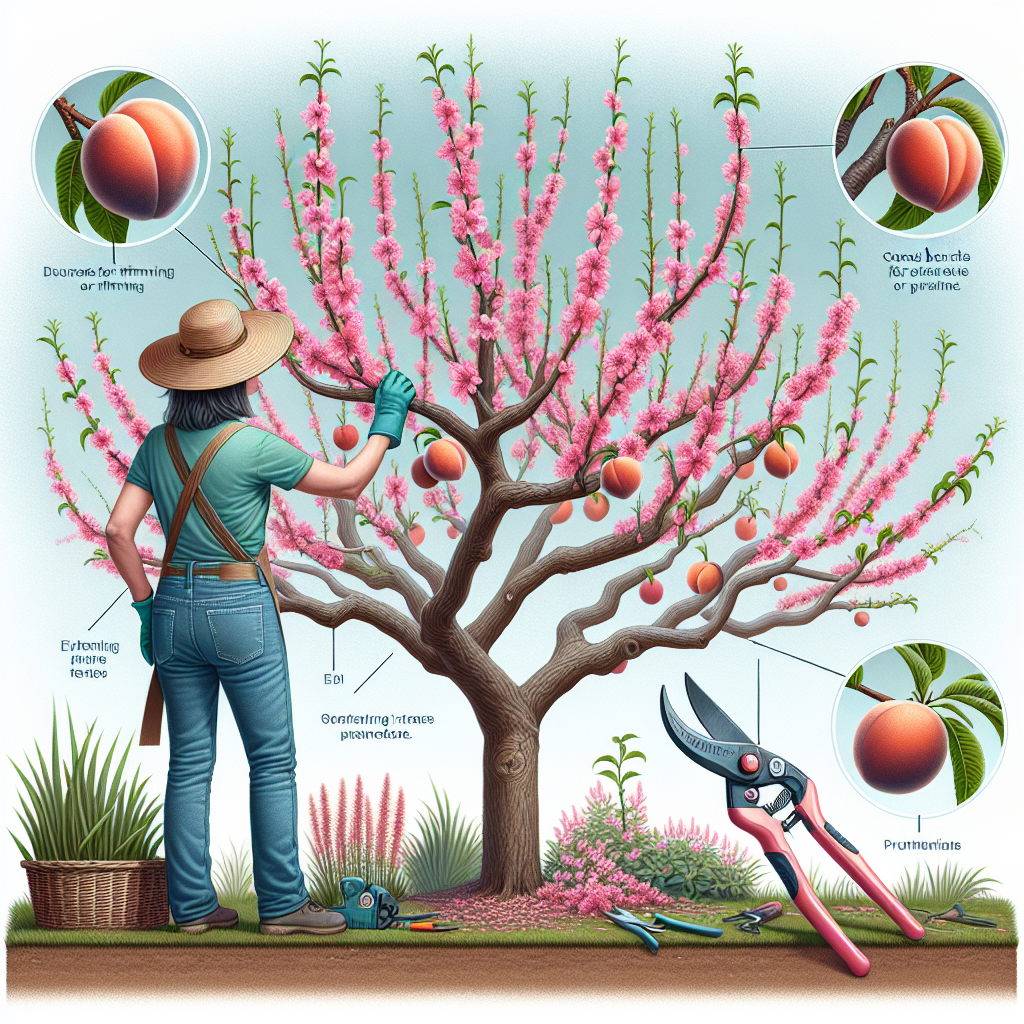
How to trim a peach tree
Understanding Peach Tree Pruning: The Basics
Pruning is an essential horticultural practice that encourages healthy growth, optimal fruit production, and tree longevity. Proper pruning techniques, especially for fruit trees like peaches, can be crucial in shaping the tree and ensuring that it continues to thrive year after year.
A peach tree thrives best when pruned correctly. This process often takes place during the dormant season or just before the growing season begins. Understanding *how to trim a peach tree* effectively can enhance the quality of fruit, influence tree health, and help manage the overall structure of the tree.
Why Prune Your Peach Tree?
Pruning serves multiple purposes, including:
- Encourage Airflow: By removing excess branches, you allow better air circulation throughout the tree, which helps prevent fungal diseases.
- Increases Sunlight Penetration: Light reaching the center of the tree improves fruit quality and overall health.
- Facilitates Harvesting: A well-pruned tree is easier to manage when it comes time to collect the fruit.
- Structure and Shape: Proper pruning promotes a desirable tree structure for stability and balance.
When to Prune a Peach Tree
Timing is critical when it comes to pruning peach trees. The best time to prune is late winter or very early spring, before the tree begins to bud but after the harshest winter conditions have passed. The climate in your area can affect the exact timing, so be sure to check local conditions.
Tools Required for Pruning
Before you start pruning, gather the necessary tools. A well-prepared toolkit will make the process smoother and more efficient. Some recommended tools include:
- Hand Pruners: Ideal for small branches.
- Loppers: Perfect for thicker branches you can reach.
- Pruning Saw: For larger branches that need removing.
- Gloves: To protect your hands from thorns or rough bark.
- Safety Goggles: To shield your eyes from flying debris.
Steps to Trim a Peach Tree
Once you are equipped with the right tools and knowledge, it's time to explore *how to trim a peach tree*. Follow these practical steps for effective pruning:
1. Assess the Tree
Begin your pruning process by examining the health and structure of the tree. Look for:
- Dead or diseased branches
- Crossover branches that can rub against each other
- Branches growing inward towards the center
- Weak branching structures
2. Start with Dead and Diseased Wood
Remove any dead, damaged, or diseased branches first. This step is crucial as it helps improve the tree's health by facilitating better airflow and reducing pest populations. Cut back to healthy wood or the base of the branch where it meets the trunk.
3. Thin Out Crowded Areas
Next, focus on areas where branches appear crowded. By selectively removing some of these branches, you encourage better growth and fruit production.
- Identify the main leaders of the branches.
- Thin out side branches that conflict with these main branches.
- Leave some lateral branches that are spaced well apart.
4. Shape the Tree
Shaping your peach tree is vital for maintaining its structure. Aim for an open-center or modified leader shape:
- Open-Center Shape: This method involves removing the central leader to encourage a vase-like structure, allowing sunlight to penetrate the center of the tree.
- Modified Leader Shape: Retain one main leader while allowing side branches to grow, forming a more traditional shape.
5. Cut at a 45-Degree Angle
When making cuts, do so at a 45-degree angle. This angle helps prevent water accumulation, reducing the risk of fungal infections. Use clean cuts and avoid tearing the bark.
6. Step Back and Evaluate
After you’ve completed your initial pruning, take a step back and assess your work. Make sure the branches are well spaced and balanced. You may need to make additional adjustments.
7. Clean Up
Once pruning is finished, gather all cut branches and dispose of them properly, especially any diseased materials, to prevent pest and disease spread.
Post-Pruning Care
Following up your pruning efforts with the right post-care practices is crucial. Here are some recommendations:
- Watering: Ensure the tree has adequate moisture following pruning, particularly if there is a risk of dry weather.
- Mulching: Apply mulch around the tree base to retain moisture and regulate soil temperature.
- Fertilizing: Use a balanced fertilizer to boost energy levels as the tree springs back into growth.
Pest and Disease Management
After pruning, remain vigilant about potential pests and diseases. Implementing preventive measures is key. Consider using organic pesticides if you notice any signs of infestations.
Common Peach Tree Issues
Be aware of the following common issues that can affect your peach tree:
- Peach Leaf Curl: A fungal disease causing distortion of leaves.
- Brown Rot: Fungal infection causing premature fruit decay.
- Fruit Fly: Pests that affect fruit quality.
Maintaining a healthy tree involves ongoing attention. Regularly monitor your tree for signs of these problems and address them promptly.
Seasonal Pruning Tips
While the general pruning guidelines provided here apply to most peach trees, seasonal adjustments may also be beneficial:
Summer Pruning
In addition to winter pruning, summer pruning can help manage growth and redirect energy towards fruit production. Focus on removing water sprouts and any overly vigorous growth during this time.
Winter Pruning
During winter, aim for heavier pruning, as trees are dormant. This time is ideal for structural shaping and ensuring adequate sunlight and air circulation for the growing season ahead.
Conclusion
Pruining your peach tree is not only beneficial but necessary for optimal health and fruit production. With the right techniques, tools, and timing, you can effectively ensure your tree remains healthy and productive. Remember, understanding *how to trim a peach tree* involves more than just cutting back branches; it encompasses a broader understanding of tree health and maintenance.
Investing time and effort into proper care will yield delicious peaches and enhance your gardening experience. Happy pruning!
By Guest, Published on October 20th, 2024